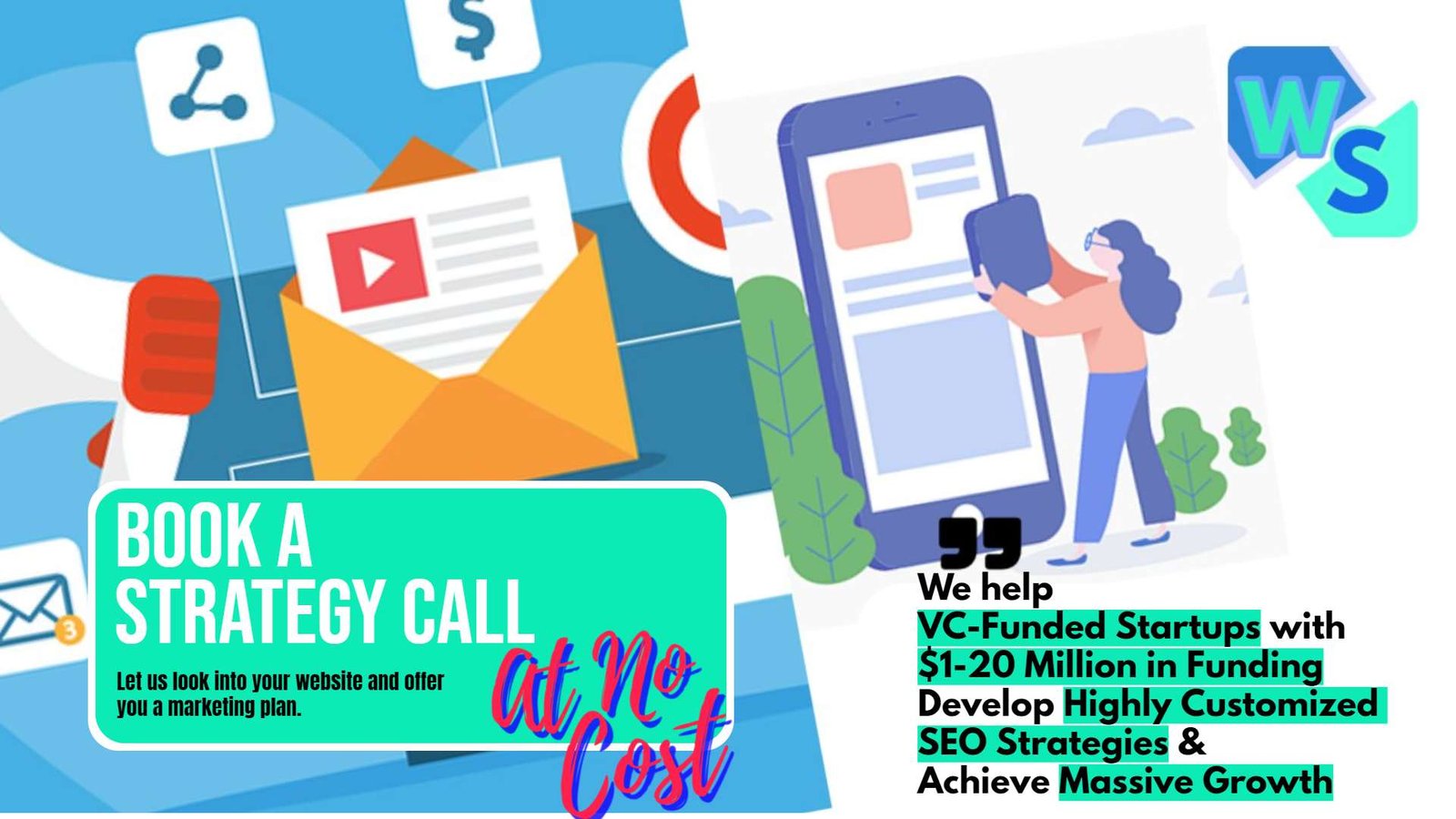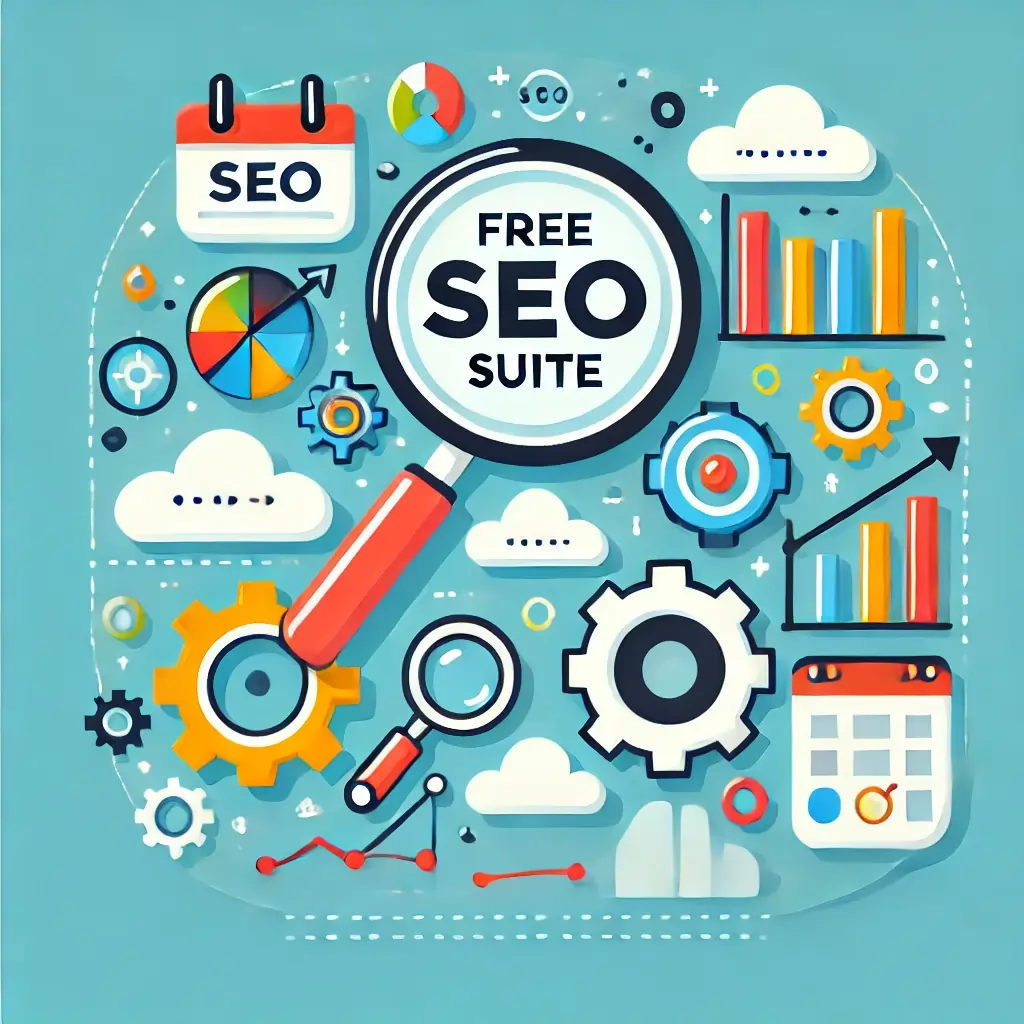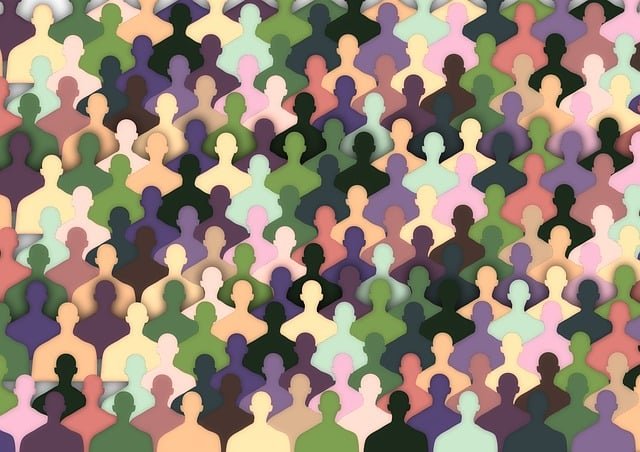Advertising has always been about getting the right message in front of the right audience at the right time. With platforms like Google and Facebook, the potential to target specific audiences has become incredibly sophisticated. But in an age where every business is competing for attention, it’s no longer enough to rely on manual targeting methods. This is where advanced AI tools step in.
AI tools for ad targeting do more than save time—they supercharge your campaigns with precision and real-time adjustments, ensuring your budget goes further and delivers better results. Whether you’re managing Google Ads or running campaigns on Facebook, these tools help you uncover audience insights, create hyper-targeted ads, and optimize campaigns for maximum ROI.
In this guide, we’ll explore how advanced AI tools are changing the game for ad targeting on Google and Facebook and provide actionable strategies to integrate them into your campaigns.
How AI Transforms Ad Targeting on Google and Facebook
In the early days, ad targeting was fairly simple. You could target based on location, age, and a handful of interests. Today, both Google and Facebook offer incredibly granular options, allowing advertisers to reach users based on browsing behavior, past purchases, and even lifestyle choices.
The Evolution of Ad Targeting
AI enhances these capabilities by analyzing massive datasets in real time. It uncovers patterns, predicts user behavior, and adjusts campaigns dynamically to deliver ads that resonate with specific audiences. This level of personalization isn’t just effective—it’s essential in a competitive digital landscape.
Dynamic Targeting with AI
AI makes targeting more fluid and responsive. Instead of sticking to predefined audience segments, AI-powered tools adapt based on real-time user behavior. For example, if a user starts researching eco-friendly products, AI can identify this trend and serve ads promoting sustainable brands, even if the user wasn’t initially part of that audience segment.
This dynamic approach ensures your ads are always relevant, increasing click-through rates (CTR) and conversions while reducing wasted ad spend.
Real-Time Optimization
One of AI’s most powerful features is its ability to optimize campaigns in real time. Traditional ad campaigns often require manual adjustments—testing different creatives, tweaking bids, or shifting budgets. AI automates this process, continuously analyzing performance and making adjustments to improve results.
For instance, AI tools can identify which ad copy or creative performs best for specific audience segments and prioritize those variations automatically. This means better results without the need for constant manual intervention.
Advanced AI Tools for Google Ads

Google’s built-in AI tool, Smart Bidding, is a game-changer for advertisers. It uses machine learning to optimize bids for each auction, helping you achieve specific goals like maximizing conversions or achieving a target return on ad spend (ROAS). The system analyzes hundreds of signals, such as device type, time of day, and user intent, to determine the best bid for each impression.
Google Ads Smart Bidding
For example, if your goal is to drive leads, Smart Bidding will automatically prioritize users who are most likely to fill out a contact form, ensuring your budget is spent effectively.
Adzooma
Adzooma is an AI-powered platform that integrates with Google Ads to provide actionable recommendations. It analyzes your campaigns and highlights opportunities for improvement, such as adjusting bids, pausing underperforming keywords, or refining your targeting. Adzooma also automates routine tasks, freeing you up to focus on strategy.
For mid-sized businesses managing multiple campaigns, Adzooma simplifies optimization and ensures your ads remain competitive in the fast-paced Google Ads ecosystem.
Optmyzr
Optmyzr is another advanced AI tool designed to enhance Google Ads performance. It offers features like Smart Suggestions, which use AI to identify ways to improve your campaigns, and Enhanced Scripts, which automate repetitive tasks. Optmyzr also provides detailed reports, helping you understand what’s working and where adjustments are needed.
For example, if a specific ad group is overspending without delivering conversions, Optmyzr can automatically reallocate budget to higher-performing groups.
Advanced AI Tools for Facebook Ads

Facebook’s native Ads Manager already incorporates AI to improve targeting and performance. Features like Lookalike Audiences leverage AI to identify users similar to your existing customers, expanding your reach without compromising relevance.
Facebook Ads Manager’s AI Features
Additionally, Facebook’s Advantage+ campaigns (previously known as automated ads) use AI to optimize targeting, placements, and budgets. This feature simplifies campaign setup while ensuring your ads reach the right people at the right time.
Revealbot
Revealbot is an advanced AI-powered tool specifically designed for Facebook Ads. It automates campaign management by analyzing performance data and implementing changes in real time. For example, if an ad set exceeds your target cost-per-click (CPC), Revealbot can automatically adjust the budget or pause the campaign until performance improves.
Revealbot’s AI algorithms also generate recommendations for scaling campaigns, making it an excellent choice for businesses looking to maximize their ad spend efficiency.
AdEspresso by Hootsuite
AdEspresso simplifies Facebook ad optimization with AI-driven insights. It tests different ad variations—headlines, images, and CTAs—to identify what resonates best with your audience. By automating A/B testing and providing actionable recommendations, AdEspresso helps you refine your campaigns and achieve better results.
For example, if one version of your ad generates higher engagement, AdEspresso will prioritize it while suggesting tweaks to underperforming creatives.
Combining AI Tools for Maximum Impact

Using AI tools for both Google and Facebook Ads allows you to create integrated campaigns that share insights and complement each other. For example, you can use data from high-performing Facebook campaigns to refine your Google Ads targeting, ensuring consistency in messaging and audience engagement.
Integrated Strategies Across Platforms
AI-powered tools like Adzooma and Revealbot can manage campaigns across multiple platforms, streamlining your efforts and providing a unified view of performance.
Retargeting with AI
AI excels at retargeting, ensuring you stay top of mind for potential customers. For instance, if a user clicks on a Google ad but doesn’t convert, you can use AI to retarget them on Facebook with a tailored message or offer. This cross-platform approach increases the likelihood of conversion while creating a seamless customer journey.
Predictive Analytics for Campaign Planning
Predictive analytics powered by AI takes the guesswork out of campaign planning. Tools like Optmyzr and Revealbot analyze historical performance data to forecast future outcomes, helping you allocate budgets and resources effectively.
For example, if AI predicts a surge in demand for a particular product, you can increase ad spend for that product ahead of time, maximizing ROI during peak periods.
Challenges and How to Overcome Them
Data Quality

AI tools rely on accurate data to deliver results. Incomplete or inconsistent data can lead to poor recommendations and wasted ad spend. Ensure your data is clean, comprehensive, and updated regularly to get the most out of AI-driven targeting.
Balancing Automation and Oversight
While AI tools can handle much of the heavy lifting, they’re not infallible. Regular monitoring is essential to ensure campaigns stay aligned with your goals. Use AI for optimization, but retain human oversight to make strategic decisions and maintain creative control.
Staying Updated
AI technology evolves rapidly, and staying informed about new features and updates is crucial. Regularly review the capabilities of your AI tools and explore new platforms to stay ahead of the competition.
The Future of AI in Ad Targeting
Hyper-Personalization
As AI continues to advance, the level of personalization in ad targeting will reach new heights. Future AI tools will analyze even more granular data, such as real-time mood or environmental factors, to deliver ads that feel uniquely tailored to each user.
Voice and Visual Search Integration
AI-powered targeting will soon extend to voice and visual search platforms. For example, users searching via smart speakers or using image-based searches on Google will trigger hyper-relevant ads powered by AI algorithms.
AI-Generated Creative
AI isn’t just optimizing targeting—it’s starting to create ads too. Tools like Jasper AI and Canva’s AI features are already generating ad copy and designs, making it easier for businesses to produce high-quality creatives at scale. This trend will continue to grow, further streamlining ad campaign management.

Related: Check out our free tools:

How to Get Started with AI Tools for Dynamic Ad Targeting
Before diving into AI tools, you need a clear understanding of what you want to achieve. Ask yourself:
Step 1: Define Your Advertising Goals
- What’s the main goal of my ad campaigns? Are you looking to increase brand awareness, generate leads, boost sales, or retarget existing customers?
- Who is my target audience? The better you define your audience, the more effectively AI tools can help refine and expand your reach.
- What is my budget? AI tools can optimize campaigns for different budgets, but knowing your spending limits ensures the right allocation of resources.
For example, if your goal is to retarget users who abandoned their cart on your e-commerce site, you can use AI-powered retargeting tools to craft dynamic, personalized ads that nudge them to complete their purchase.
Step 2: Choose the Right AI Tools
There’s no shortage of AI tools for Google and Facebook ads, but picking the right ones depends on your needs and expertise. Start by exploring tools that align with your objectives:
- For beginners: Tools like Google’s Smart Bidding and Facebook’s Ads Manager Advantage+ offer built-in AI features that are easy to use.
- For advanced users: Platforms like Adzooma, Revealbot, and Optmyzr provide more granular control, allowing you to optimize campaigns across multiple channels.
Experiment with trial versions or free features to see how well these tools integrate with your existing workflows.
Step 3: Integrate AI with Existing Campaigns
Instead of overhauling your entire advertising strategy, start by incorporating AI into existing campaigns. For example:
- Use Smart Bidding on Google Ads for a specific product or service.
- Enable Facebook’s Lookalike Audience feature to expand your reach using your best-performing customer segments.
This incremental approach lets you see immediate benefits while giving you time to adapt to the technology.
Step 4: Analyze and Adjust
AI tools work best when they’re fed with real-time feedback. After launching your campaigns:
- Monitor performance metrics like CTR, cost per conversion, and ROAS.
- Use AI recommendations to tweak targeting, ad copy, or budget allocation.
- Continuously test new ad variations to identify what resonates most with your audience.
For example, if Revealbot suggests pausing a specific ad set due to high CPC, act on this insight and reinvest that budget into better-performing campaigns.
Step 5: Scale Your Efforts
Once you’ve seen success with AI tools on a smaller scale, expand your efforts. This could mean:
- Applying AI-driven optimizations across multiple ad platforms (Google, Facebook, Instagram).
- Introducing advanced tools like predictive analytics to forecast future campaign performance.
- Testing new AI features, such as creative automation, for faster content generation.
Scaling your campaigns with AI ensures consistent growth without requiring proportional increases in time or resources.
Real-Life Examples of AI Success in Ad Targeting

A mid-sized e-commerce store selling fitness apparel used Facebook’s dynamic ads and Revealbot for retargeting. By leveraging AI, they showed personalized ads to users who had abandoned their carts, featuring the exact products they’d left behind.
Small Business: E-Commerce Store Boosts Sales with Retargeting
Result: A 35% increase in cart recovery rate and a significant drop in ad spend due to better targeting.
SaaS Company: Improving Lead Quality on Google Ads
A SaaS company offering project management software used Google’s Smart Bidding combined with Optmyzr to optimize their ad spend. The AI tools analyzed past campaign data to identify high-converting audience segments and adjusted bids accordingly.
Result: A 20% decrease in cost per acquisition (CPA) and a 40% increase in high-quality leads.
Retail Brand: Cross-Platform Targeting Success
A retail brand running campaigns on both Google and Facebook used Adzooma to manage cross-platform targeting. By analyzing performance metrics, the AI tool recommended shifting budgets toward Facebook ads for younger audiences and Google Ads for older demographics.
Result: A 50% increase in engagement and a higher ROI across both platforms.
The Future of Dynamic Ad Targeting
AI-Powered Creative

AI tools like Jasper and Canva’s AI features are already making it easier to create ad copy and designs. In the future, expect tools that generate complete, ready-to-run ad campaigns tailored to your audience preferences.
Imagine an AI that crafts a Facebook ad, suggests the perfect image, and writes a headline based on what’s trending—all in minutes.
Advanced Multichannel Integration
As AI evolves, the lines between platforms will blur. Tools will enable seamless integration across Google, Facebook, Instagram, TikTok, and more, offering unified insights and optimization strategies.
This means a single AI platform could recommend shifting budgets between platforms in real time, ensuring every dollar is spent where it’s most effective.
Predictive Targeting
Predictive targeting will take audience segmentation to the next level. AI will analyze real-time trends, external factors (like weather or economic changes), and user intent to predict which audiences are most likely to engage or convert.
For example, if an AI detects an increase in searches for outdoor activities due to a sunny weekend forecast, it might prioritize ads for hiking gear or picnic accessories in specific regions.
Unlocking the Full Potential of AI in Ad Targeting
Overcoming Barriers to Entry

For businesses hesitant to adopt AI tools for ad targeting, the biggest obstacles often include perceived complexity, cost concerns, and a lack of technical expertise. However, these barriers are quickly diminishing:
- Ease of Use: Many AI tools, like Google Smart Bidding and Facebook’s Advantage+ campaigns, are designed with simplicity in mind. You don’t need to be a data scientist to leverage their capabilities.
- Affordability: AI platforms now offer tiered pricing models, making them accessible to small and mid-sized businesses. Many tools also come with free trials or entry-level features to get you started.
- Support and Training: Platforms like Adzooma, Revealbot, and Optmyzr offer tutorials, dedicated support teams, and extensive documentation to help businesses navigate implementation.
By starting small and choosing user-friendly tools, even businesses with limited resources can reap the benefits of AI-driven ad targeting.
Building an AI-Centric Ad Strategy
To fully unlock the potential of AI in ad targeting, it’s important to approach your campaigns strategically. Here’s how to build an AI-centric ad strategy that drives real results:
- Understand Your Data: Begin by auditing your data sources, such as CRM systems, website analytics, and social media insights. Clean, organized data is the foundation of effective AI implementation.
- Set Clear KPIs: Define success metrics, such as cost per click (CPC), return on ad spend (ROAS), or conversion rates. AI tools work best when they have specific goals to optimize for.
- Test and Iterate: AI tools thrive on continuous learning. Test various targeting strategies, creatives, and bidding approaches. Use the insights generated to refine your campaigns.
- Leverage Automation: Take advantage of AI’s ability to automate repetitive tasks, such as bid adjustments and ad placements. This frees up your team to focus on strategy and creative development.
Future-Proofing Your Advertising Efforts
AI is not static—it evolves rapidly. To stay ahead, businesses must remain adaptable and forward-thinking. Here’s how to future-proof your advertising efforts in an AI-driven world:
- Stay Informed: Keep up with the latest advancements in AI advertising technology. Platforms like Google and Facebook frequently introduce new features, and staying informed ensures you’re leveraging their full potential.
- Experiment with Emerging Platforms: While Google and Facebook dominate the digital advertising space, platforms like TikTok, Pinterest, and LinkedIn are also integrating AI into their ad systems. Exploring these channels can open up new opportunities for growth.
- Focus on Customer Experience: AI-driven targeting is not just about delivering ads—it’s about creating meaningful interactions. Invest in AI tools that prioritize personalization and relevance, ensuring your audience feels valued and understood.
The Competitive Edge of AI in Advertising
As more businesses adopt AI for ad targeting, the competitive landscape will continue to evolve. To stand out, focus on how you use AI creatively:
Standing Out in a Crowded Market
- Hyper-Personalization: Use AI to craft highly tailored ads that speak directly to individual users’ needs, preferences, and behaviors. For example, a clothing retailer could serve ads showcasing winter coats to users in colder climates and swimsuits to those in warmer regions—all in real time.
- Predictive Insights: Anticipate what your audience wants before they even search for it. AI-powered tools can help identify trends and emerging demands, allowing you to position your products or services as solutions ahead of competitors.
- Creative Optimization: Let AI take over routine tasks while you focus on building innovative, compelling ad creatives that capture attention and drive engagement.
Final Thoughts: Elevating Your Ad Strategy with AI
Advanced AI tools are no longer a luxury—they’re a necessity for businesses looking to compete in today’s digital advertising landscape. Whether you’re optimizing Google Ads with Smart Bidding or scaling Facebook campaigns with Revealbot, these tools empower you to deliver more relevant, engaging, and effective ads.
The key is to start small, test different tools, and build a strategy that leverages AI’s strengths while maintaining human creativity and oversight. As AI technology continues to evolve, those who embrace it early will gain a significant competitive edge.
The future of ad targeting is dynamic, data-driven, and powered by AI. Are you ready to take your campaigns to the next level? The tools are here—the only limit is how you use them.
READ NEXT:
- Are Vanity Metrics Killing Your Marketing Efficiency? Here’s What to Track Instead
- Pinpointing Digital Marketing ROI: Why Your Metrics Aren’t Telling the Full Story
- Unlocking Real ROI in Digital Marketing: The Hidden Costs Draining Your Budget
- How Misaligned Marketing Funnels Are Blocking Your ROI Potential
- Best Digital Marketing Agency In Santa Ana, California
- Best Digital Marketing Agency In San Francisco, California





















